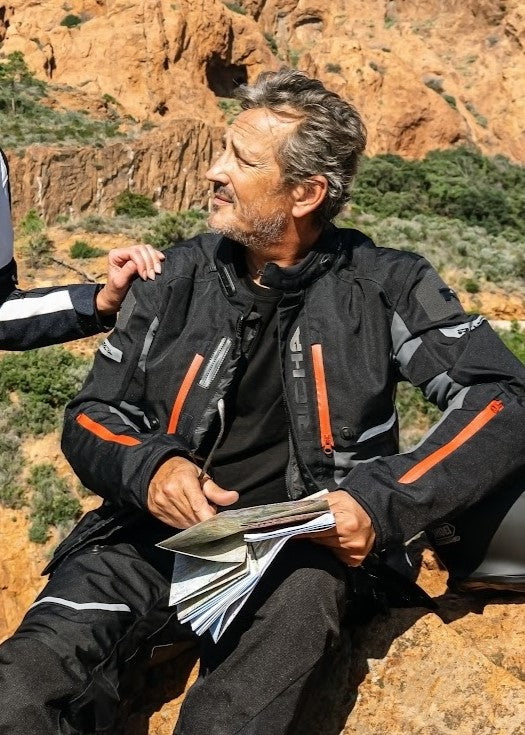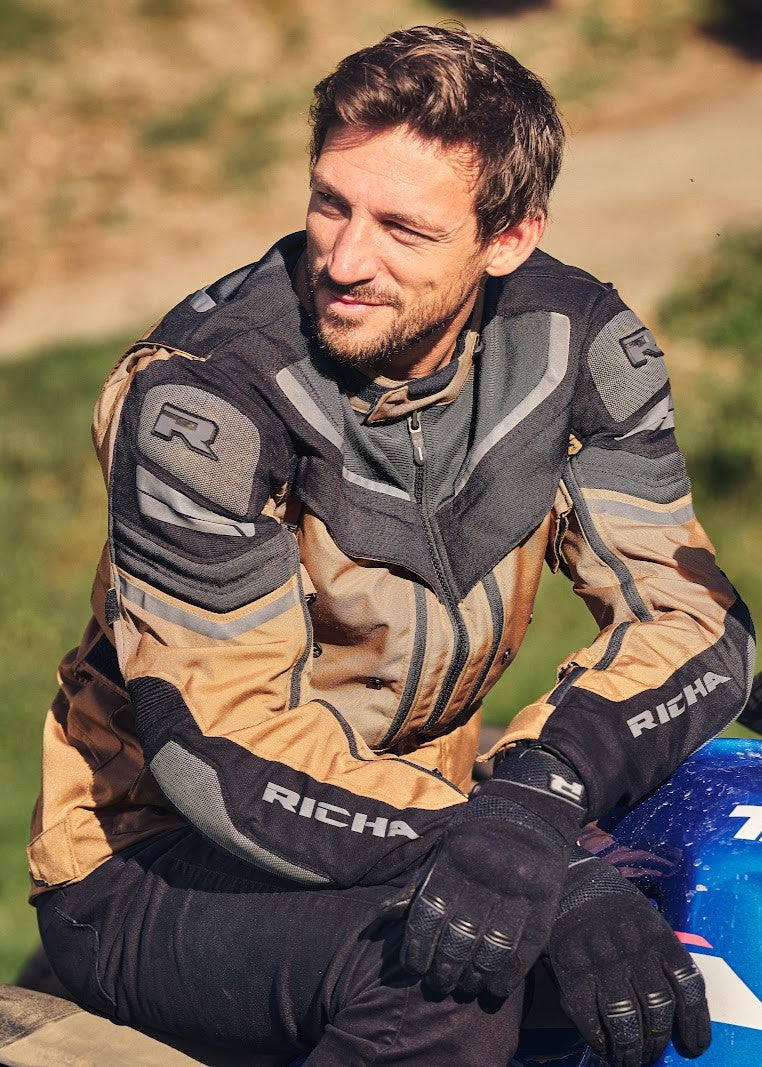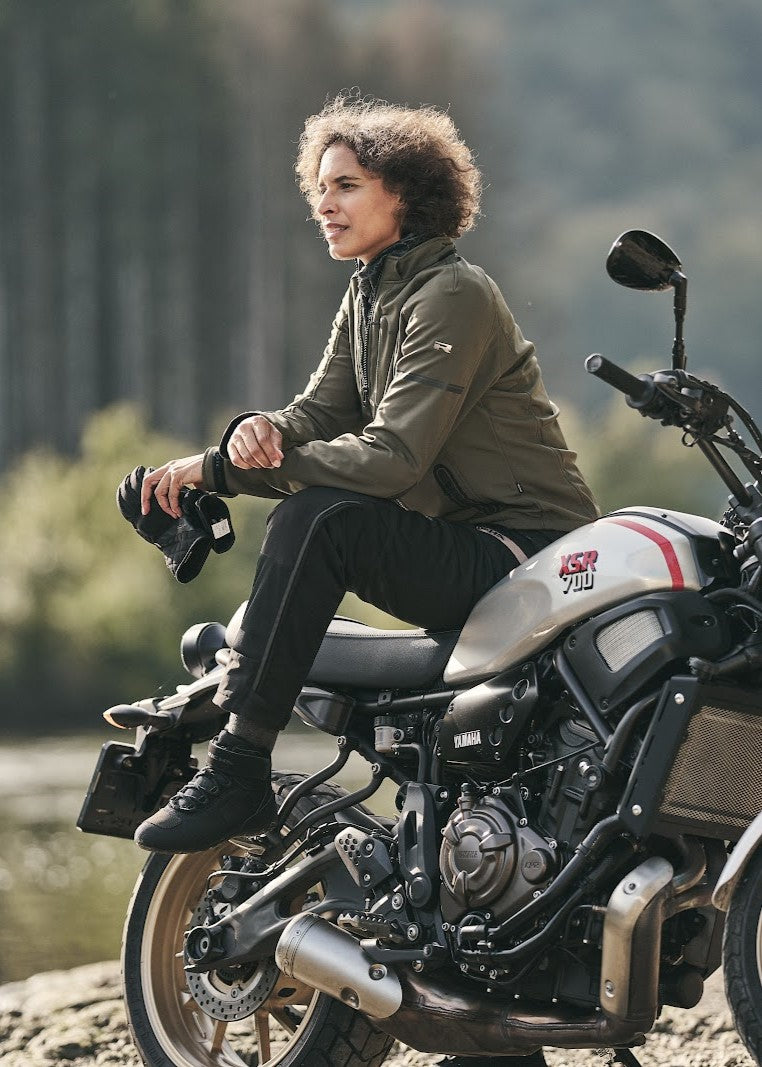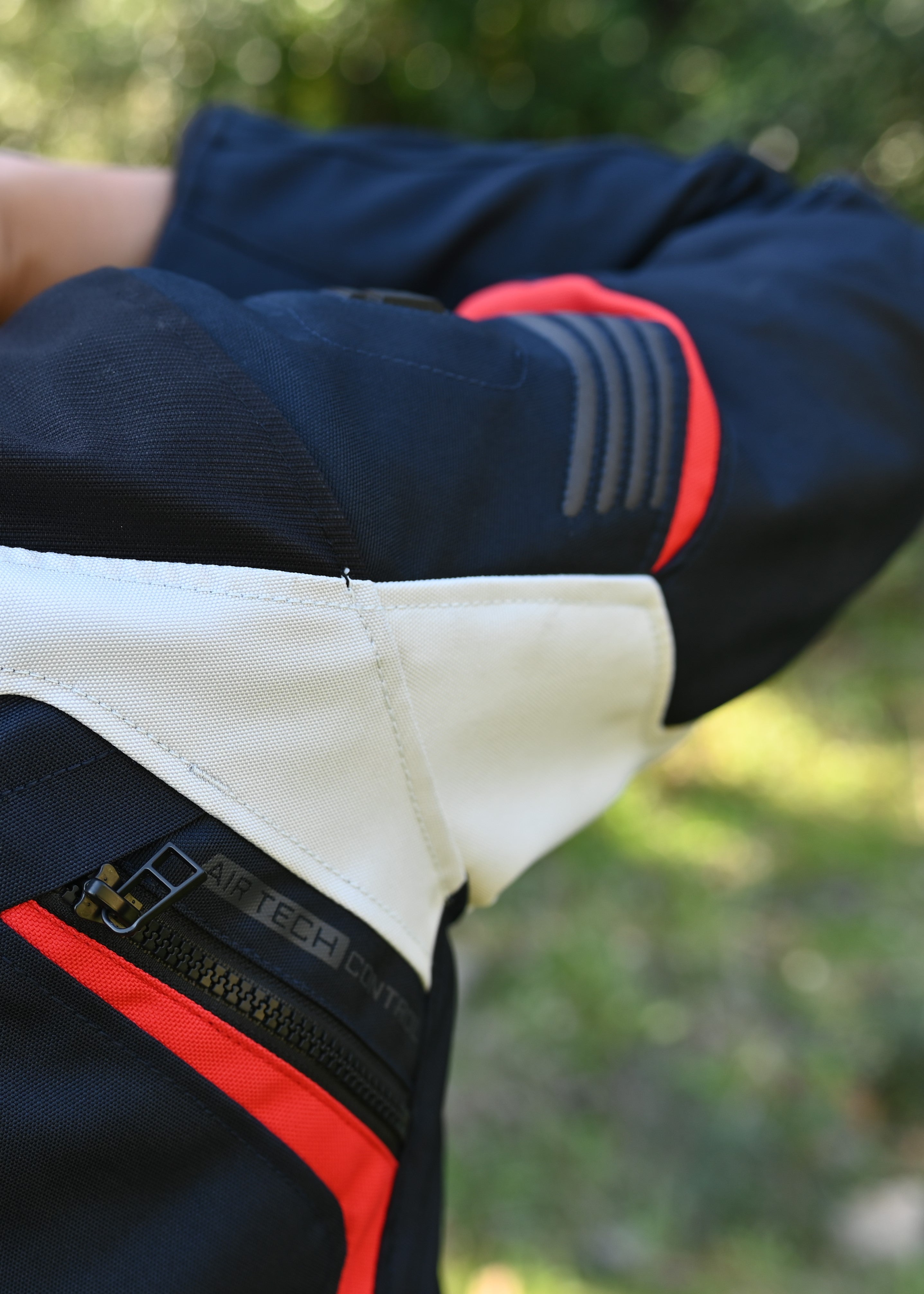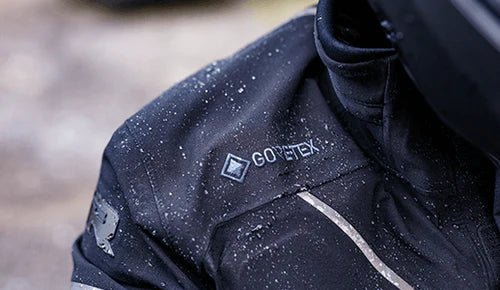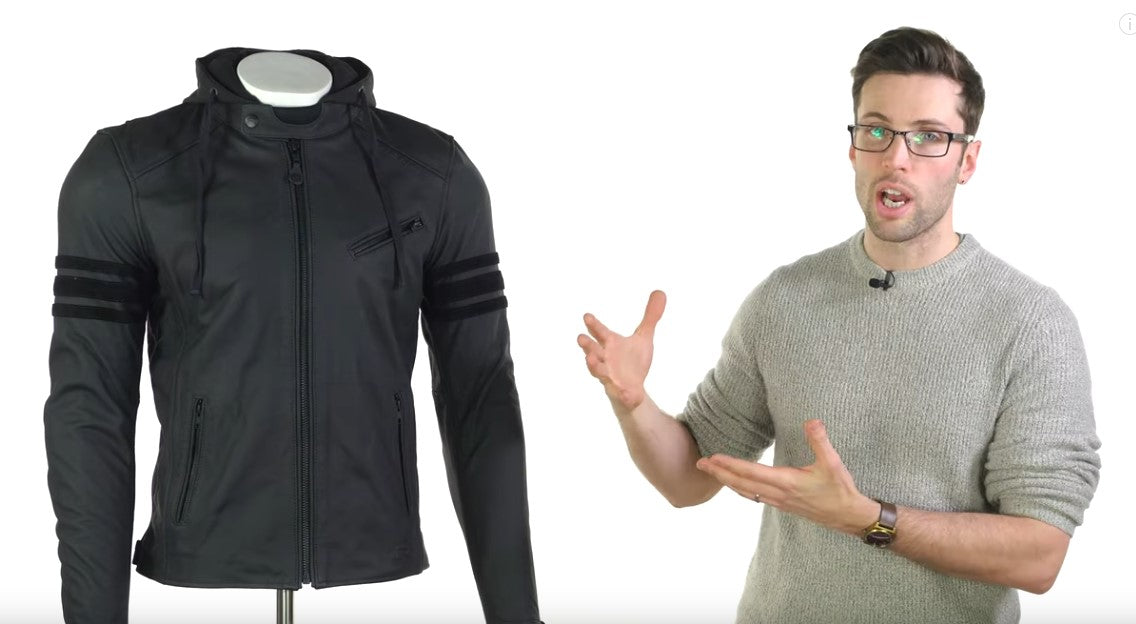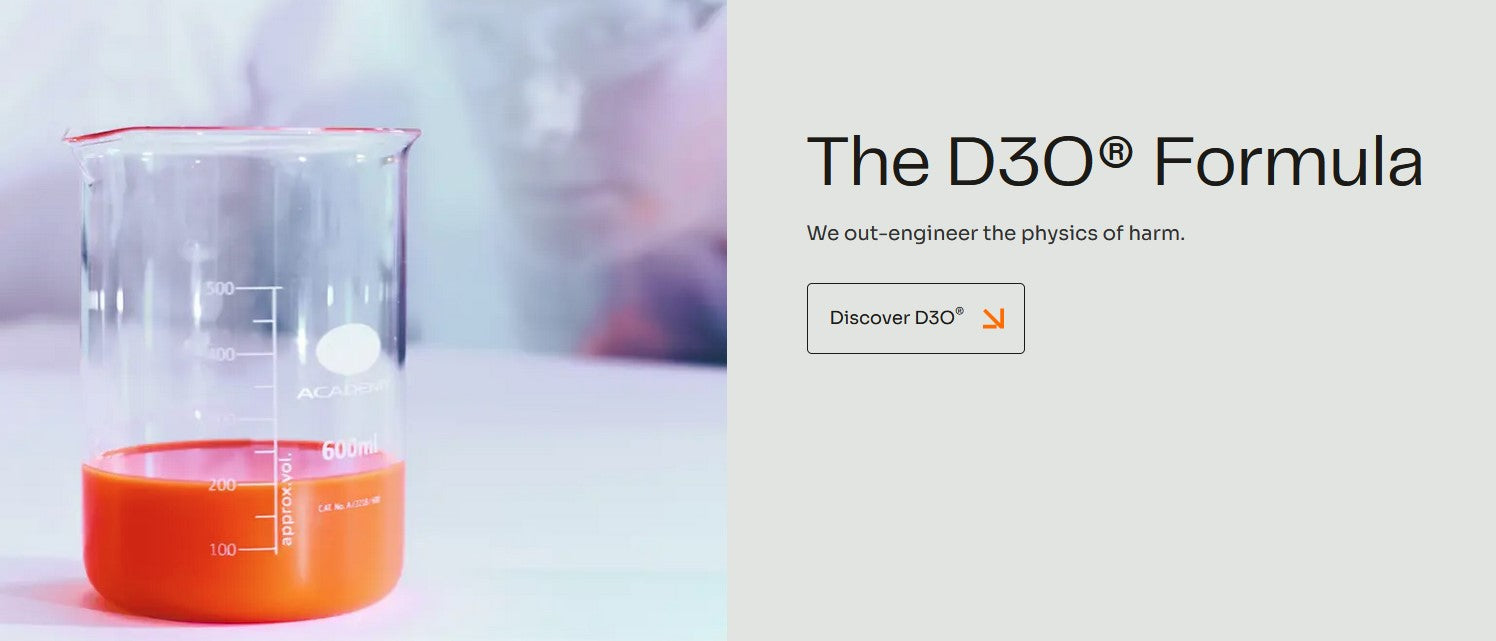
Battle of the Bike Armor: D3O vs. Sas-Tec and Other Leading Motorcycle Protectors
One of the most critical pieces of gear is body armor, designed to absorb impacts and protect vital areas like elbows, knees, shoulders, hips, chest, and back. With advancements in materials science, brands have developed innovative protectors that balance comfort, flexibility, and protection. In this blog, we'll dive deep into D3O motorcycle protectors, compare them head-to-head with Sas-Tec, and stack them up against other top brands like Forcefield, Knox, and Alpinestars. We'll look at features, pros, cons, and real-world performance to help you choose the right armor for your rides. Here at Richa we equip all our gear with D3O exclusively, even our riding sneakers. Read on.
Whether you're a daily commuter, touring rider, adventure rider, or track enthusiast, understanding these options can make a huge difference in your gear setup. Let's break it down.
What Makes Great Motorcycle Armor?
Before jumping into specifics, it's worth noting the key factors we evaluate:
- Protection Level: Most modern armor is CE-certified (EN 1621 standard), with Level 1 offering basic protection (average transmitted force <35kN for limbs) and Level 2 providing superior impact absorption (<20kN average).
- Comfort and Flexibility: Armor should feel soft during normal wear but harden or absorb energy on impact.
- Ventilation and Breathability: Essential for long rides, especially in warm weather.
- Weight and Thickness: Lighter and thinner options fit better under jackets and pants without bulk.
- Durability and Lifespan: How well it holds up over time and multiple impacts.
- Price: Value for money, as premium armor can range from $20-$100 per piece.
Now, onto the brands.

D3O: The Smart Material Pioneer
D3O is renowned for its patented non-Newtonian material that remains soft and flexible during everyday use but instantly hardens upon impact, dispersing energy effectively.
This "rate-sensitive" technology makes it a favorite in jackets from brands like Richa. D3O offers a range of protectors, including the Ghost (ultra-thin and breathable), LP2 Pro (high-coverage Level 2), and Diablo L2 (studded for extra flexibility).
Key Features
- CE Level 1 or 2 certification across models.
- Thickness varies: Ghost is around 10-12mm, while others like LP2 Pro hit 15mm.
- High ventilation in models like Ghost, with perforations for airflow.
- Weight: Lightweight, e.g., Ghost knee protector at ~116g.
Pros
- Exceptional comfort—feels like wearing nothing until impact.
- Great for all-weather riding; it doesn’t get overly hot or stiff in cold.
- Versatile fit in various gear pockets. Can also be trimmed.
- Proven in real crashes, with low transmitted forces (often exceeding Level 2 standards by 40% in tests).
Cons
- Can be pricier than basic foam armor.
- Lifespan: Recommended replacement every 3-5 years, depending on use.
D3O shines for riders prioritizing a "set it and forget it" feel, making it ideal for urban and touring setups.
Sas-Tec: The Flexible Foam Contender
Sas-Tec, a German brand, uses viscoelastic foam with a memory effect for its protectors—no hard shells, just smart foam that absorbs shocks while staying pliable.
Their lineup includes TripleFlex (thin and ventilated) and SCS (with a TPU shell for added durability). Sas-Tec is often found in gear from Rev'it, Held, and Pando Moto.
Key Features
- CE Level 1 or 2, with excellent residual force values (up to 50% below EN 1621 limits).
- Ultra-thin: Many models around 10mm, like the SC-1/KA2air.
- Ventilation: Perforated designs in newer models for breathability.
- Weight: Very light, e.g., TripleFlex knee at under 100g.
Pros
- Super flexible and molds to your body quickly, even in cold weather.
- Thinner profile for better fit in minimalist gear.
- High shock absorption without edges or hard parts, reducing pressure points.
- Durable: 10-year lifespan claim, and abrasion-resistant.
Cons
- Less "magic" hardening feel compared to D3O; more consistent firmness.
- Ventilation can be hit-or-miss in non-perforated models.
- Availability: Harder to find as standalone inserts in some regions.
Sas-Tec is good for riders who want slim, unobtrusive protection that doesn't compromise on mobility.
Other Leading Brands
While D3O and Sas-Tec dominate the "smart foam" space, several other brands offer strong alternatives. Here's a quick rundown:
Forcefield
Forcefield focuses on multi-impact protection with breathable, flexible designs like the Isolator 2 series. It's CE Level 2 certified and uses layered foam for energy dispersion.
Pros:
· Excellent abrasion resistance; reusable after minor impacts. High ventilation.
Cons:
· Stiffer than D3O or Sas-Tec; shorter lifespan (2-3 years recommended).
- Best for: Off-road and adventure riders needing durable, vented armor.
Knox
Knox's Micro-Lock technology locks molecules on impact, similar to D3O, but with a focus on temperature stability (doesn't stiffen in cold).
Models like Micro-Lock Compact are slim and Level 2.
- Pros: Softer and more comfortable than Forcefield; great for all seasons.
- Cons: Slightly bulkier in some fits; mid-range pricing.
- Best for: Commuters and tourers who ride in varying weather.
Alpinestars (Nucleon Series)
Alpinestars' Nucleon protectors use hybrid foam and sometimes integrate with airbags. They're CE Level 2 and emphasize coverage.
- Pros: Integrated well with Alpinestars gear; good value and protection.
- Cons: Less flexible than pure foam options; can feel rigid.
- Best for: Sport and track riders pairing with full suits.
Other notables include Rev'it (Seesoft, similar to Sas-Tec) and Dainese (Pro-Armor, flexible and vented), which often score high in 2025 gear guides.
Head-to-Head Comparison Table
To make it easier, here's a comparison of key models across categories (based on average specs for limb protectors; back protectors may vary). Data pulled from reviews and specs as of 2025.
|
Brand/Model |
Protection Level |
Thickness (mm) |
Flexibility (1-10) |
Ventilation (1-10) |
Weight (per knee, g) |
Approx. Price (pair) |
Lifespan (years) |
|
D3O Ghost/LP2 Pro |
CE Level 2 |
10-15 |
9 |
8 |
116 |
$50-80 |
3-5 |
|
Sas-Tec TripleFlex/SCS |
CE Level 2 |
8-10 |
10 |
7 |
<100 |
$40-70 |
10 |
|
Forcefield Isolator 2 |
CE Level 2 |
12-15 |
7 |
9 |
120 |
$60-90 |
2-3 |
|
Knox Micro-Lock |
CE Level 2 |
12 |
8 |
8 |
110 |
$50-75 |
5-7 |
|
Alpinestars Nucleon |
CE Level 2 |
13 |
7 |
7 |
130 |
$45-65 |
5 |
*Notes: Flexibility and ventilation scores are subjective averages from user reviews. Prices are for elbow/knee pairs; always check for back/hip add-ons.
Conclusion: Which One Wins?
D3O edges out for its innovative hardening tech and all-around comfort, making it a top pick for most riders—especially if you value that "soft until struck" magic. Richa uses D3O exclusively in all its products that contain protectors.
However, Sas-Tec is a close second (and often the winner for slim fits) due to its thinner profile and longer durability.
If you're on a budget or need max ventilation, consider Forcefield or Knox. For integrated systems, Alpinestars can't be beat.
Ultimately, the "best" depends on your riding style and gear. Always opt for CE Level 2 where possible and replace armor after big impacts. Ride safe, and gear up wisely—your body will thank you! If you've tried these, share your experiences in the comments.

